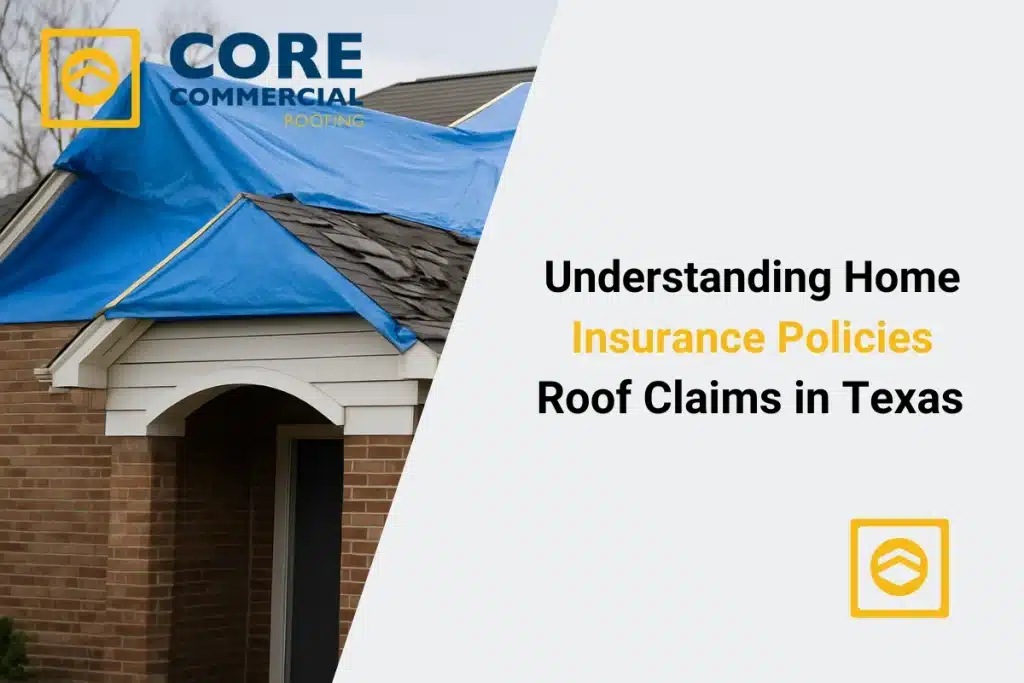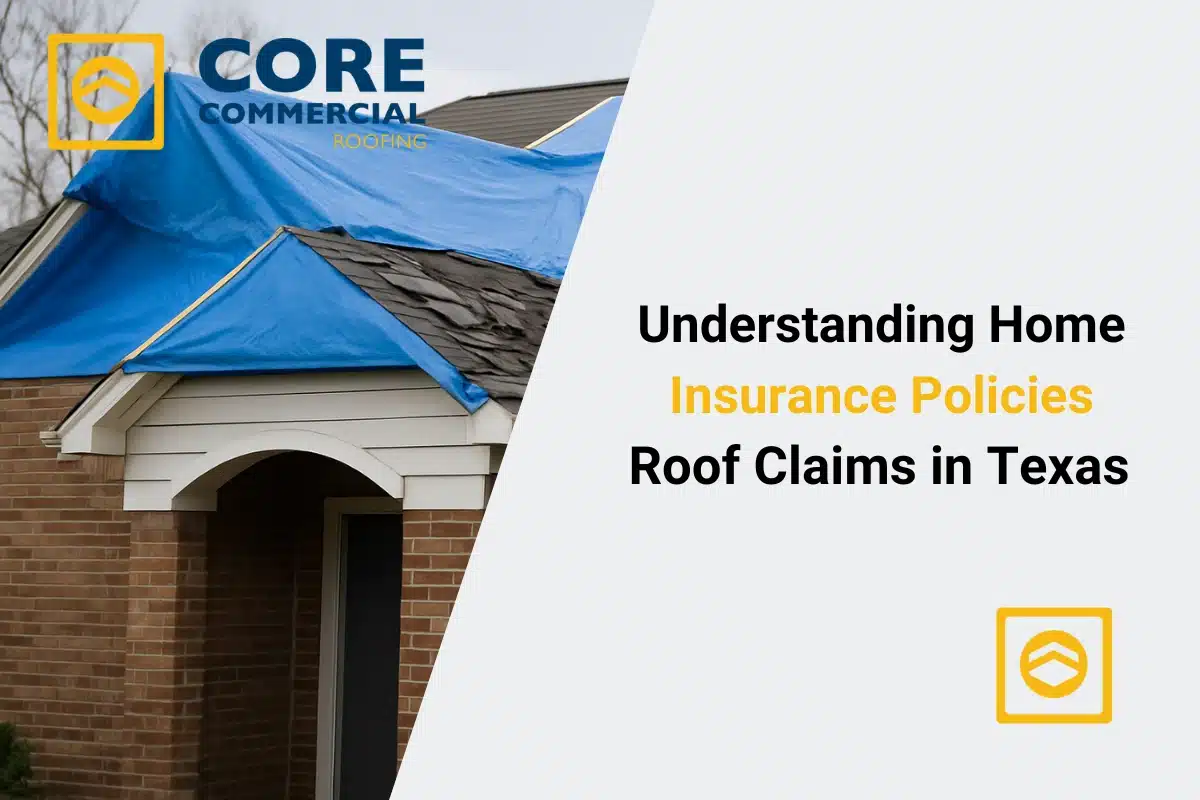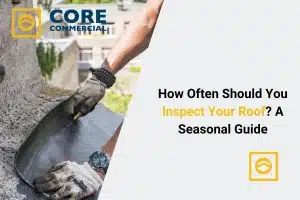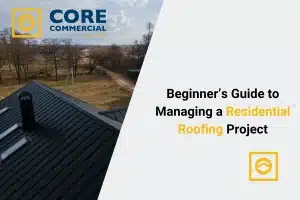This article provides Texas homeowners with a clear and detailed understanding of how home insurance policies work, particularly regarding roof damage and insurance claims. You’ll learn what coverage your policy includes (and excludes), how deductibles and depreciation affect payouts, and what to expect during the claims process. We also explain how Texas-specific weather conditions impact roof damage claims, how to avoid common mistakes, and how to protect your finances and home in the long term. Whether you’re already dealing with damage or just planning, this guide answers the questions real Texans are asking and helps you make smart, informed decisions.
Why Roof Insurance in Texas Is a Big Deal
Texas homeowners face extreme weather hail, windstorms, hurricanes, and even tornadoes. Roofs often take the brunt of this damage, making insurance coverage crucial. But many people only find out what isn’t covered when it’s too late. This section explains why it’s so important to understand your policy before you need it.

Table of Contents
What Makes Texas Unique?
- Frequent hailstorms: Texas leads the U.S. in hail damage claims.
- High winds: Strong gusts can tear shingles or entire roof sections off.
- Sudden weather changes: From dry heat to floods and hail—all in one month.
- Insurance regulations: Texas policies can differ significantly from those in other states.
Understanding the impact of local weather on your roof coverage gives you an edge when it’s time to file a claim—or better yet, before.
What Standard Homeowners Insurance Covers for Roofs
Not all policies are equal. Let’s break down what a typical homeowner’s insurance policy might include for roof coverage in Texas.
Basic Coverage: What’s Usually Included
Most standard home insurance policies in Texas cover roof damage caused by:
- Hail
- Wind
- Fire
- Falling trees or debris
- Weight of snow or ice
This is under the “dwelling coverage” portion of your policy. If the damage results from one of these perils and your roof is in good condition before the event, your policy will likely help pay for repairs or replacement.
You read: RimWorld roofs
What’s Not Covered
Here’s what homeowners often don’t know:
- Normal wear and tear: Insurance doesn’t cover aging roofs.
- Lack of maintenance: If you didn’t fix known issues, they won’t pay for it.
- Pre-existing damage: If a previous storm damaged your roof and you didn’t file, you might be out of luck.
- Manufacturer defects: Not usually covered by home insurance; may be under warranty.
Knowing these exclusions helps prevent surprises when it’s time to file a claim.
ACV vs. RCV: What Kind of Coverage Do You Have?
This is one of the most important—and confusing—parts of roof insurance. Your payout depends on whether your policy offers Actual Cash Value (ACV) or Replacement Cost Value (RCV).
ACV (Actual Cash Value)
- Covers the depreciated value of your roof.
- If your 15-year-old roof costs $15,000 new but has 10 years of use left, you might get only $5,000–$7,000.
- Common in older homes or high-risk areas (many Texas homes fall into this group).
RCV (Replacement Cost Value)
- Pays the full cost to replace your damaged roof, minus your deductible.
- You typically receive payment in two parts: the ACV upfront and the rest after the work is complete.
- Offers better protection but often comes with higher premiums.
Always check your policy for these terms. They make a huge difference in what you’ll receive after damage.
Deductibles: Flat vs. Percentage in Texas
Texas insurance policies often come with percentage-based deductibles for wind and hail damage, which can surprise homeowners.
What You Need to Know
- A flat deductible is a fixed dollar amount, like $1,500.
- A percentage deductible is based on your home’s insured value. For example:
- 2% of a $300,000 home = $6,000 out of pocket before insurance kicks in.
This means if you have a $6,000 deductible and your roof repair costs $10,000, your insurance only pays $4,000.
What to Watch Out For
- Many policies split deductibles: one for “all perils” and one for “wind/hail.”
- Always review your declaration page and ask your agent to explain the numbers clearly.
How the Roof Insurance Claims Process Works in Texas
Filing a roof claim can feel overwhelming. Here’s what typically happens, step by step:
Step 1: Assess the Damage
After a storm:
- Look for missing shingles, dents in gutters, or ceiling leaks.
- Use a professional roofer to inspect—some offer free assessments.
Step 2: File Your Claim
- Contact your insurer as soon as possible.
- Provide photos, inspection reports, and details of the storm.
Step 3: Insurance Adjuster Inspection
- The insurer sends an adjuster to inspect the roof and confirm damage.
- You can have your roofer present to advocate for your case.
Step 4: Estimate & Coverage Review
- The insurer gives you an estimate based on their findings.
- You’ll receive a payout minus depreciation and deductible (if ACV).
- With RCV, you can recover depreciation after roof replacement.
Step 5: Roof Repair or Replacement
- Hire a trusted, local roofing company.
- Submit final invoices and photos for reimbursement if eligible.
Common Mistakes Texas Homeowners Make with Roof Claims
Many homeowners lose thousands because they don’t fully understand their policies or make errors during the claims process.
Top Mistakes to Avoid
- Waiting too long to file: Texas policies often have short claim windows.
- Not reviewing your deductible: You may be shocked at the out-of-pocket cost.
- Skipping inspections: Small leaks turn into big damage—and big denials.
- Hiring storm chasers: Avoid out-of-town roofers who disappear after storms.
- Assuming all damage is covered: Your policy might exclude cosmetic damage.
Avoiding these pitfalls increases your chances of a successful, fair claim.
How to Prepare Your Roof (and Policy) Before the Next Storm
You can take steps now to improve your chances of coverage and reduce damage.
Proactive Steps to Take
- Schedule yearly roof inspections, especially before storm season.
- Take photos of your roof now: It helps show the condition before damage.
- Clear branches and debris: Prevent damage from falling limbs.
- Check your policy annually: Review deductible amounts and coverage type.
- Upgrade materials: Impact-resistant shingles can lower premiums and damage.
Insurance companies love documentation and maintenance records. Doing the work up front often pays off later.
Final Thoughts: Protecting Your Roof and Your Wallet
Understanding your home insurance policy and especially how it applies to your roof isn’t optional in Texas. It’s a smart financial move. Storms are unpredictable, but your coverage shouldn’t be. When you know the difference between ACV and RCV, check your deductible, and stay on top of inspections, you’re prepared for whatever comes next.
Before the next Texas storm hits, take time to:
- Review your policy
- Get a roof inspection
- Document everything
- Ask your insurer questions—don’t wait for a storm to test your coverage
With the right knowledge, you can protect your home, save thousands, and avoid the heartbreak of denied claims or unexpected expenses.
FAQs
Does home insurance cover hail damage in Texas?
Yes, most Texas home insurance policies cover hail damage, but coverage depends on your policy’s terms. It’s essential to review your policy details and consult your insurer to confirm specific coverage for hail-related roof damage.
Will insurance cover a 15-year-old roof in Texas?
Insurance coverage for a 15-year-old roof varies. Some policies may offer limited coverage or actual cash value settlements due to depreciation. It’s crucial to check your policy and discuss with your insurer about coverage specifics for older roofs.
How do I file a roof insurance claim in Texas?
To file a roof insurance claim in Texas, document the damage with photos, contact your insurance provider promptly, and consider hiring a reputable roofing contractor to assess the damage and assist with the claims process.
What is the difference between ACV and RCV in roof insurance?
ACV (Actual Cash Value) covers the depreciated value of your roof, while RCV (Replacement Cost Value) covers the full cost to replace it. RCV generally offers more comprehensive coverage but may come with higher premiums.
How does roof age affect insurance claims in Texas?
Older roofs may receive reduced coverage due to depreciation. Insurers often assess the roof’s age and condition to determine claim payouts. Regular maintenance and inspections can help in securing better coverage.
What steps should I take after hail damages my roof in Texas?
After hail damage, ensure safety, document the damage with photos, prevent further damage if possible, and contact your insurance provider to start the claims process. Consulting a professional roofer for an assessment is also advisable.
Are wind and hail damage covered by Texas home insurance?
Generally, standard Texas home insurance policies cover wind and hail damage. However, coverage can vary, especially in coastal areas. It’s important to review your policy and confirm coverage specifics with your insurer.
Can I choose my contractor for roof repairs after a claim?
Yes, homeowners typically have the right to select their own licensed and insured contractor for roof repairs. Ensure the contractor is reputable and experienced in handling insurance claims.
What is the typical deductible for roof claims in Texas?
Deductibles for roof claims in Texas often range from 1% to 2% of the home’s insured value. The exact amount depends on your policy terms. Review your policy to understand your specific deductible.
How long does it take to process a roof insurance claim in Texas?
The timeline for processing a roof insurance claim in Texas can vary, but typically ranges from a few weeks to a couple of months. Prompt documentation and communication with your insurer can help expedite the process.






